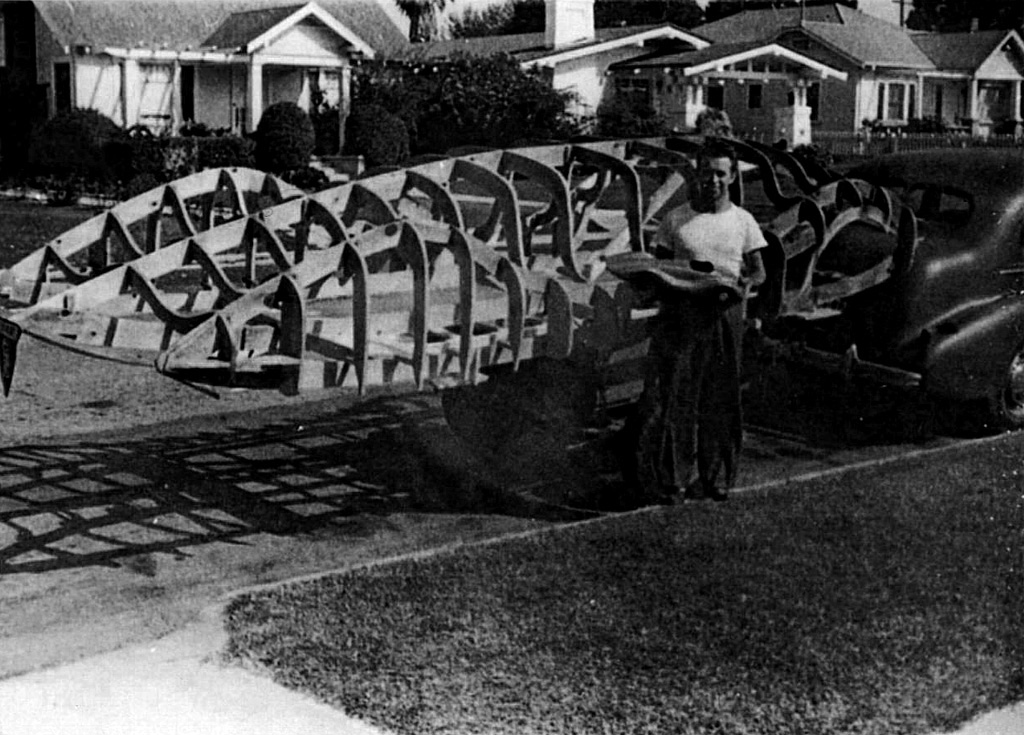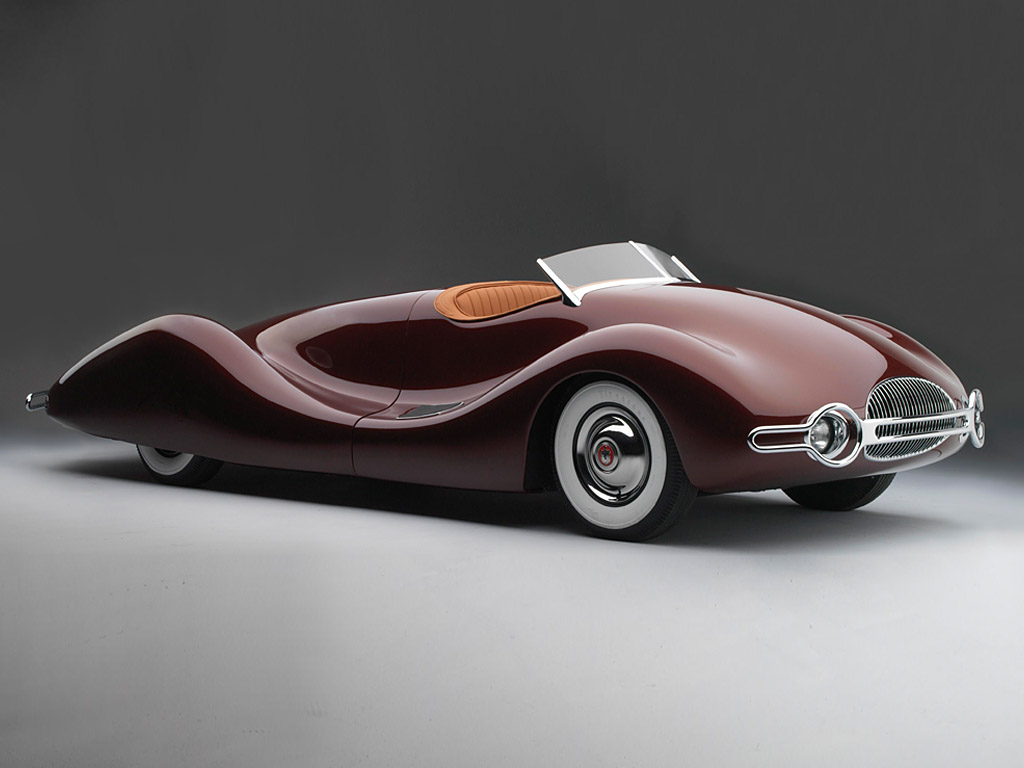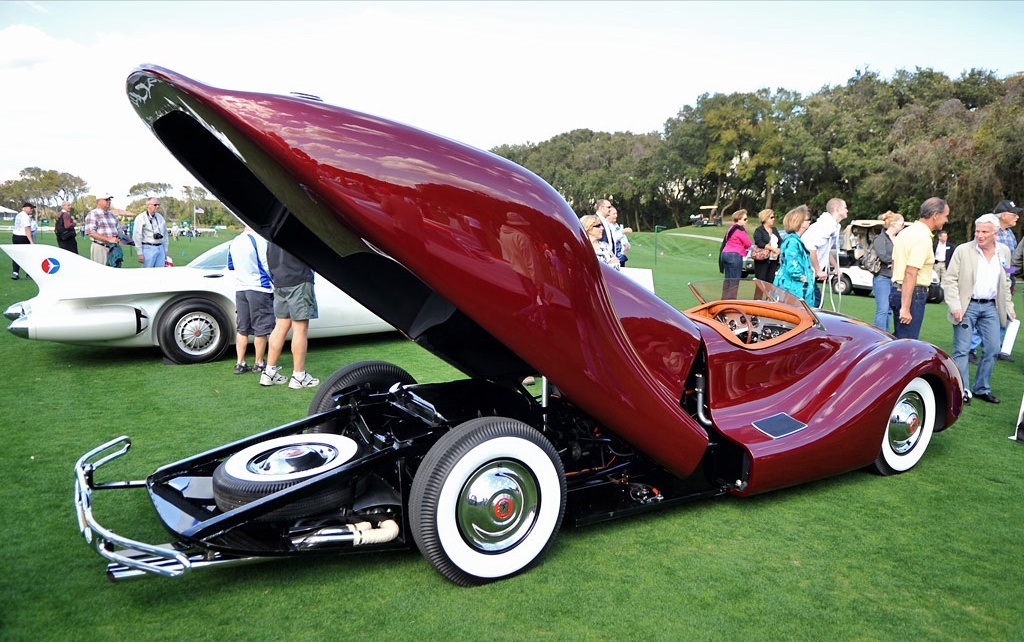When restoration expert Gary Cerveny rescued the forgotten Special from a California desert junkyard in 2002, the world had long forgotten the former darling of Motor Trend. Darling is in reference to the car, not Cerveny, although he’s a lovely fellow.
The poor carcass of what remained spent years as a plaything for children outside of a restaurant before retiring to the junkyard as scrap.
Thankfully, Norman Timbs made the body of the Special from aluminum so it was still in one piece, unrusted. All Cerveny had to do was completely rebuild everything from underneath it.
It’s a sad comment on humanity that such a gem should fall so far, but it is also a comment on how much humanity loves a return to glory. It’s as if we can imagine ourselves in the story, rising to greatness, falling to our demise, then rising again sometime later.
Norman E. Timbs

Norman E. Timbs | carstyling.ru
A car engineer who worked with the likes of Preston Tucker of Tucker Torpedo fame, Timbs went on to develop racing specials.
With roots in the aircraft design business, Timbs moved in Indy 500 design work, winning the grand prize more than once in his life. One finds his name attached to many Blue Crown Special designs.
Timbs took much of his inspiration from his background in airplane design, but also from the 1937 Auto Union Type C Stromlinie racing car from Germany.
That vehicle would inform much of the design for his most noteworthy project, the Timbs 1947 Special.
Here’s an image of the German 1937 Auto Union Type C for reference:
1947 Special
It took Timbs over three years and $10,000 to design and build the Buick Special Streamliner, starting with drawing table designs.
When finished, the car would feature a low, cab-forward design, rare at the time. The body would be edge-free, with smooth lines like an aircraft. He would put the engine in the middle, just behind the cockpit.
After he had enough sketches of his idea, he molded small clay versions, then scaled up to a wood template that captured what he wanted to keep.
To build the chassis, Timbs used what he knew, aircraft tubing, stronger than off the shelf tubing.
The internal parts of the car came mostly from a Mercury, but the engine was a 1948 Buick V8. Timbs wanted this car to do more than look pretty. He wanted speed too.
He molded aluminum over the wood template, then slapped the whole thing together.
No hood, the back section behind the driver’s seat lifted to reveal the engine and spare tire. The final weight was 2200, and the Special could go 120 mph.
Life of a Legend
For a time, the Special was hot stuff. It was too expensive to turn into a production car so it would live its life as a prototype. Motor Trend and Popular Mechanics both featured it in the late forties.
Then, in the 1950s an Air Force Officer, Jim Davis, purchased the Special and took it to his home in Manhattan Beach, California. After that, the Special changed a few hands, spending some time as a children’s plaything outside a restaurant. [Cue: groans from car enthusiasts.]
When Cerveny pulled what was left of the Special from the junkyard in 2002, he paid $17,600 for it, almost double what Timbs spent to build it in ’47.
Cerveny completely rebuilt the car, adding upgraded push-button hydraulics to open the rear compartment.
In 2010, the restored Special made its debut at the Amelia Island Concours where it took the trophy for Best Open Car and put everyone’s jaw on the ground.
Hopefully, nobody will have to go through a complete restoration of this beauty again because someone let children run around on it.
Hopefully everyone can enjoy this kind of resurrection at least once in life, sans the part where kids run all over the body. Yikes.
Sources: m.thevintagenews.com, cardesignnews.com, legendarycollectorcars.com





